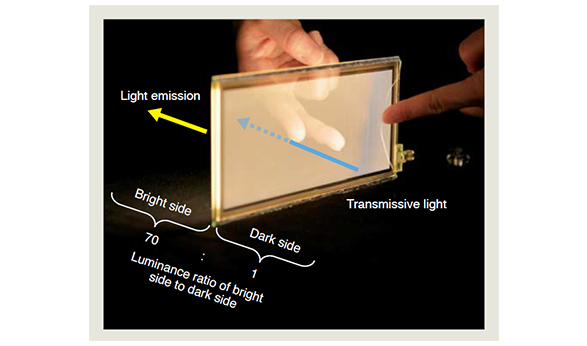- Back to the previous page
- Nano Materials & Devices
Transmissive One-Side-Emission OLED Lighting
Organic LEDs (OLEDs) emit gentle light in a plane and can be fabricated in transparent form. Because of these advantages, OLEDs are expected to be next-generation light sources as the successors to LEDs. However, the conventional transparent OLED panel using a semitransparent cathode loses transparency when it is lit up. This is because visibility through the panel from one side to the other is obstructed by the light emitted from both sides of the panel.
To solve this problem, Toshiba has developed a transmissive one-side-emission OLED panel using a microfabricated cathode with a width of approximately 100 μm, narrow enough to be invisible to the naked eye. In the newly developed OLED panel the bright side achieves 70 times the luminance compared with the dark side. Because it emits light from only one side of the panel, the illuminated objects can be seen from the dark side through the panel. Furthermore, we have adopted a solid transparent encapsulant to improve the transmittance of the OLED panel. This structure reduces reflection due to the differences in the refractive index at each interface among the sealing glass, internal gas, and organic layers. As a result, the newly developed OLED panel has a transmittance 18% higher than the conventional type.
We will continue to develop new applications, taking advantage of the unique features of OLEDs.

Transmissive one-side-emission OLED panel


